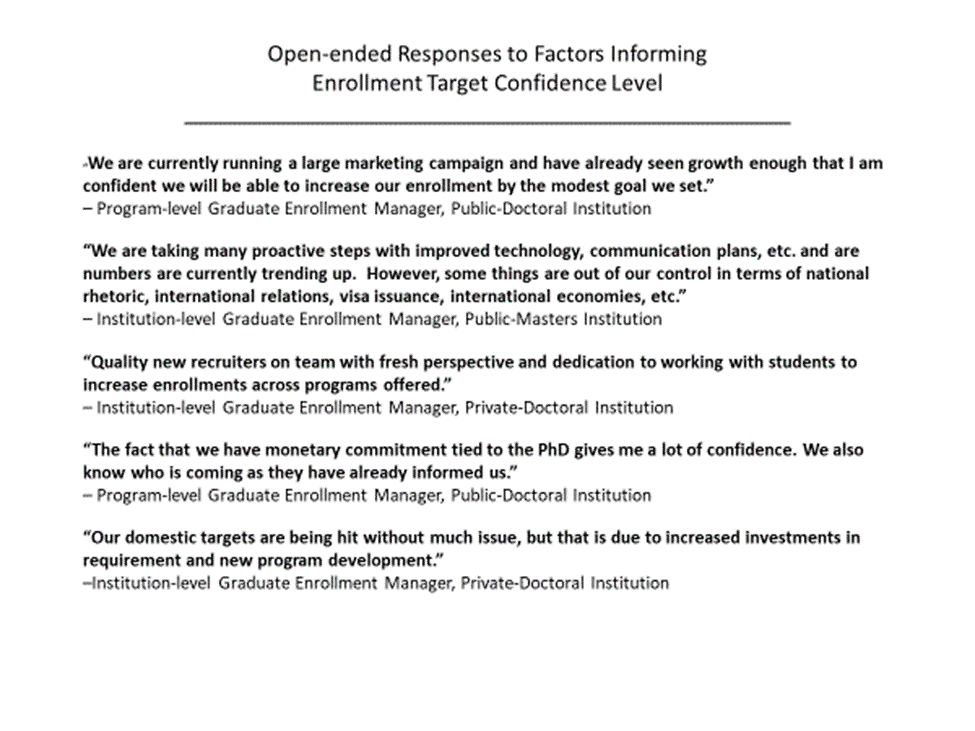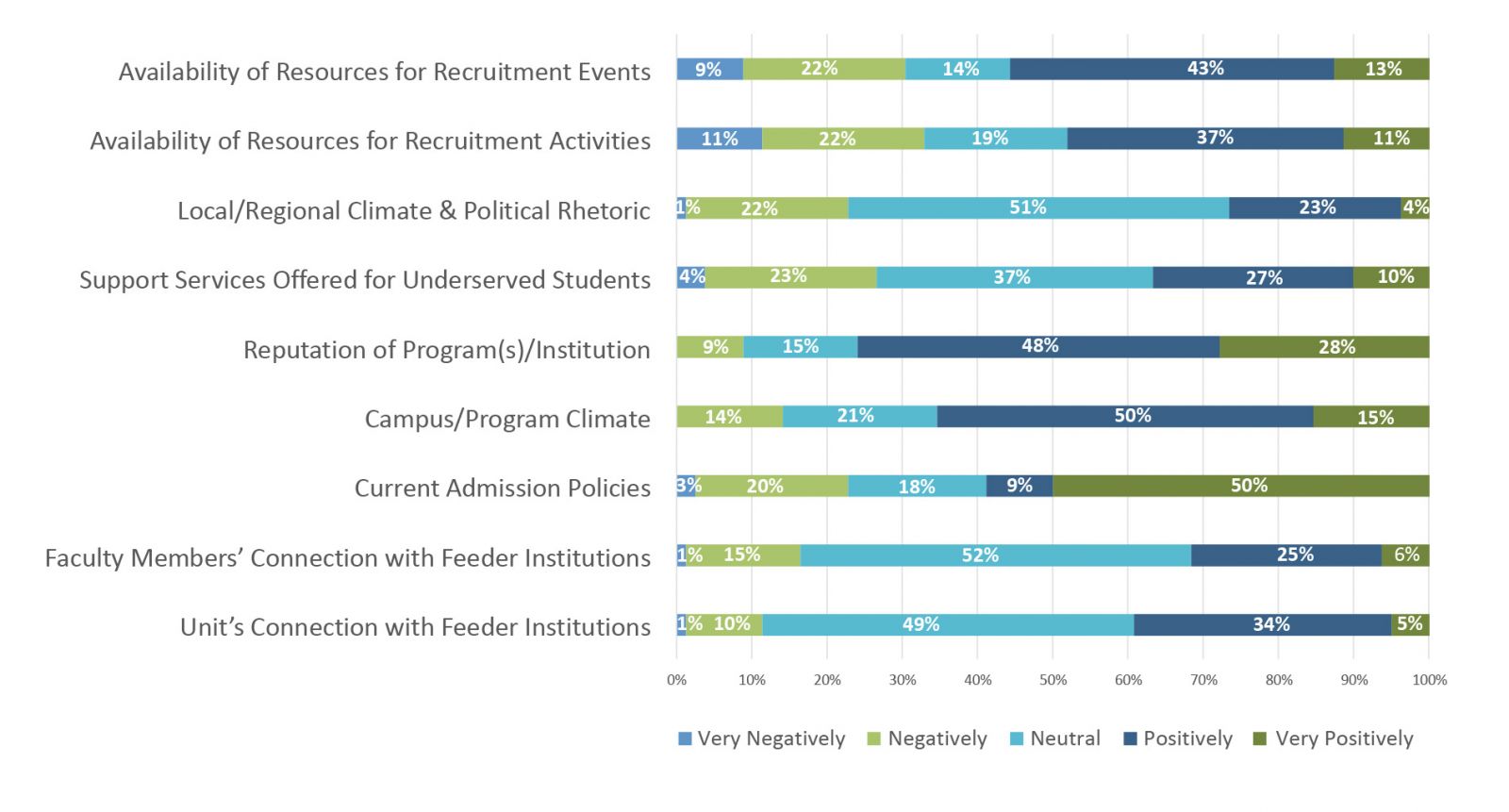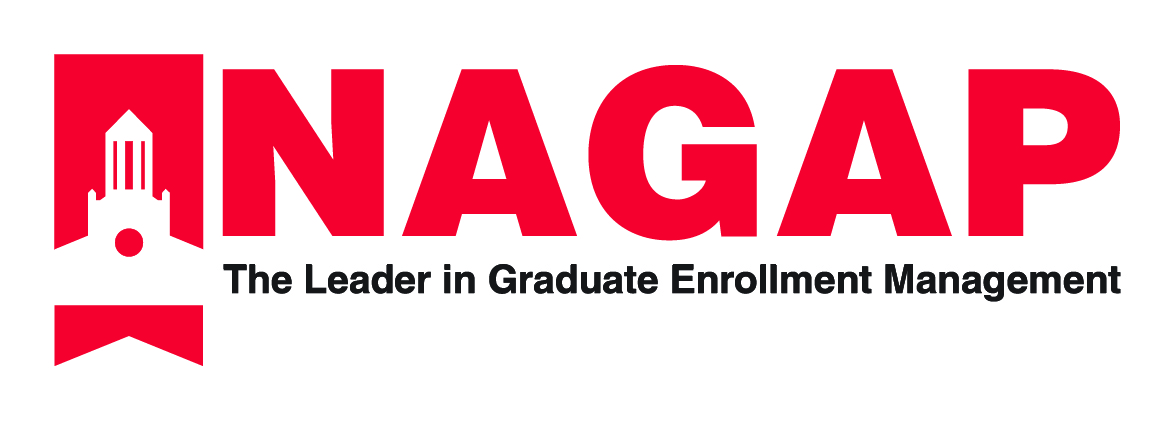You are on CGS' Legacy Site.
Thank you for visiting CGS! You are currently using CGS' legacy site, which is no longer supported. For up-to-date information, including publications purchasing and meeting information, please visit cgsnet.org.
General Content
On October 28, CGS submitted a letter to the House Committee on Education and Labor in response to the introduction of the College Affordability Act, which would reauthorize the Higher Education Act. The bill includes measures to expand support for graduate education, including allowing graduate students to allocate remaining semesters of Pell support towards their graduate degree, reinstating subsidized loans for graduate students, and increasing support for HBCUs, HSIs, TCUs, and other MSIs.
By Hironao Okahana and Christian P.L. West
According to the Council of Graduate Schools (CGS), applications for admission to master’s programs increased by 1.4% and for doctoral programs by 4.1% between Fall 2017 and Fall 2018, while first-time enrollment in these programs grew by 2.0% and 2.9%, respectively (Okahana & Zhou, 2019a). Despite recent declines in international graduate enrollment (Okahana & Zhou, 2019a & 2019b), overall graduate enrollment at U.S. colleges and universities continues to grow, albeit modestly. This is not surprising as workforce demands for graduate degree holders are still growing in the United States. Jobs that require master’s degrees and doctoral degrees at the entry are expected to rise by 13.7% and 9.0% between 2018 and 2028, respectively (U.S. Bureau of Labor Statistics, 2019).
To gain insights about how graduate schools and programs are working to respond to this growing need for graduate degree holders, CGS collaborated with NAGAP, the Association for Graduate Enrollment Management to survey graduate enrollment management (GEM) professionals at U.S. and Canadian based institutions. Of the 167 respondents to the survey, 47.3% of GEM professionals reported that their institution or program has a robust enrollment growth target - 10% or more. In this brief, we discuss some of the insights gathered from this survey of GEM professionals.
Key Findings
- In addition to the national labor market and workforce demands, GEM professionals in the survey whose units have robust enrollment growth targets cited the importance of the reputation and ranking of the program/institution; availability of scholarship/fellowships; and campus/program climate as factors influencing decision to grow. The importance of these factors varied by specific institutional characteristics, including the Carnegie classification and public-private status. For example, regional and local labor market and workforce needs were more important at public institutions than their private counterparts. (Figure 1)
Figure 1.

Data Source: NAGAP, The Association for Graduate Enrollment Management & Council of Graduate Schools, Survey of Graduate Enrollment Management Professionals, Summer 2019.
- GEM professionals also cited increased resources such as additional full-time professional staff, implementation of a customer relations management system, institution-wide enrollment management strategy, and a dedicated budget for marketing and travel as critical to their ability to meet enrollment goals. (Table 1)
Table 1.

- Also, GEM professionals identified the reputation of the program/institution, campus climate, admission policies, and resources for recruitment as the top factors in their ability to increase the diversity of their incoming student body. (Figure 2)
Figure 2.

Data Source: NAGAP, The Association for Graduate Enrollment Management & Council of Graduate Schools, Survey of Graduate Enrollment Management Professionals, Summer 2019.
Takeaway Points
- Internal and external factors contribute to the setting of robust enrollment increase targets. There are both push and pull factors between program/institutional strengths and national, regional, and local workforce demands. This underscores the importance of aligning the strength of graduate programs with national, regional, and local labor market needs.
- In qualitative survey responses, GEM professionals make a direct connection between enrollment goal setting and institutional infrastructure. The alignment of goals and resources may increase confidence among GEM professionals in their ability to achieve their enrollment goals.
- While GEM professionals have confidence in their ability to achieve their overarching graduate enrollment goals for their units, they acknowledge meeting diversity goals as a different challenge. Given the positive influence of the reputation of institutions and graduate programs, as well as campus climate cited by GEM professionals, successful diversity recruitment strategies appear to require broader participation of stakeholders beyond GEM professionals.
Conversation Starters for Graduate Deans
- How do your graduate school and graduate programs use local, regional, and national workforce projections to determine enrollment goals?
- What resources can your graduate school and graduate programs leverage to meet the enrollment goals for specific segments of the recruitment pipeline,e.g., masters, doctoral, professional, domestic, international?
- What strengths can your graduate school and graduate programs leverage to successfully recruit a more diverse graduate student population in recruitment? How do diversity goals align with overall enrollment goals, strategies, and resource allocations?
Additional Resources
- Graduate Enrollment Trends: CGS/GRE Survey of Graduate Enrollment and Degrees and CGS International Graduate Admission Survey provide yearly snapshots and trends in graduate applications and enrollment across all fields of master’s and doctoral programs. Beyond the published report, requests for custom data reports can be made to CGS.
- The Outlook of the Workforce Needs: O*NET OnLine is an online tool for career exploration and job analysis sponsored by the U.S. Department of Labor. The web tool offers detailed insights, including projections of workforce needs and education and training needs for each occupation by the Standard Occupational Classification. Additional data may also be available via state and regional workforce development boards.
- Guides for Holistic Graduate Admissions: Two recent CGS projects: Innovation in Graduate Admissions through Holistic Review (supported by Hobsons) and Master’s Admission Attribute Study (supported by ETS) offer insights for promising practices in graduate admissions and enrollment management. NAGAP, The Association for Graduate Enrollment Management also offers the Holistic Admissions Resource Guide, as well as there are other efforts, such as Inclusive Graduate Education Network offers workshops for inclusive admissions practices.
References:
Okahana, H., & Zhou, E. (2019a). Graduate enrollment and degrees: 2008 to 2018. Washington, DC: Council of Graduate Schools.
Okahana, H., & Zhou, E. (2019b). International graduate applications and enrollment: Fall 2018. Washington, DC: Council of Graduate Schools.
U.S. Bureau of Labor Statistics. (2019). Table 5.2 Employment, wages, and projected change in employment by typical entry-level education (Employment in thousands). Retrieved from https://www.bls.gov/emp/tables/education-summary.htm.
About the Data Source:
The 2019 NAGAP/CGS Survey of Graduate Enrollment Management Professionals was developed by CGS, in consultation with NAGAP, and sent out to NAGAP members throughout July – August 2019. This brief is based on the deidentified, individual-level data file of 167 respondents. 91% of respondents voluntarily identified their institution and institutional characteristics were added to the data file using 2015 Carnegie Classification information. Analysis for this brief is based on a sample of 47.3% (N=79) institutions identifying a goal to increase overall enrollment by 10% or higher. These institutions break out into public Doctoral institutions (N=20), private Doctoral (N=12), public Masters institutions (N=10), and private Masters institutions (N=10).
Author Contribution and Acknowledgment
The brief was prepared by Hironao Okahana and Christian P.L. West. H.O. conceived and designed the project and data collection instrument, as well as supervised the analysis for this work. C.W. performed data cleaning and analysis, prepared the figures and table. Both authors discussed and contributed to the final brief. Suzanne T. Ortega, Enyu Zhou, Radomir Ray Mitic, and Janet Gao also provided feedback to earlier drafts of the brief. NAGAP, The Association for Graduate Enrollment Management provided feedback to earlier versions of the data collection instrument and administered the survey to its members. Any opinions, findings, and conclusions or recommendations expressed in this brief do not necessarily reflect the views of NAGAP.

November 2019
The Council of Graduate Schools (CGS) is a member association of over 480 U.S. and Canadian colleges and universities. Member universities vary in size, scope, and way that graduate programs are organizing and administering. Based on responses from the 200 universities that participated in the 2019 CGS Survey of Organization & Administration of Graduate Education, this brief provides selected insights into how graduate education is organized and administered in the U.S. and Canada. The finding affirms that the majority of responding institutions organizes the responsibilities of graduate education within an organizational unit led by a dean. This organizational structure provides graduate education administrators with leadership roles that are similar in stature and expectations to those of academic colleges and collegiate deans. We also found that in addition to supporting graduate student success, the organizations responsible for graduate education, particularly at research-intensive institutions, also oversee postdoctoral trainees.
October 2019
According to the Council of Graduate Schools (CGS), applications for admission to master’s programs increased by 1.4% and for doctoral programs by 4.1% between Fall 2017 and Fall 2018, while first-time enrollment in these programs grew by 2.0% and 2.9%, respectively (Okahana & Zhou, 2019a). Despite recent declines in international graduate enrollment (Okahana & Zhou, 2019a & 2019b), overall graduate enrollment at U.S. colleges and universities continues to grow, albeit modestly. This is not surprising as workforce demands for graduate degree holders are still growing in the United States. Jobs that require master’s degrees and doctoral degrees at the entry are expected to rise by 13.7% and 9.0% between 2018 and 2028, respectively (U.S. Bureau of Labor Statistics, 2019).
Career Pathways Brief: Job Changes of PhD Graduates After Earning Their Degree
July 2019
Relatively little is known about the job transitions PhD degree holders experience at various stages of their careers. Using data from the Council of Graduate Schools’ Understanding PhD Career Pathways for Program Improvement project, this brief looks into current and immediate prior jobs of PhD degree holders who earned their doctorates three years (Cohort A), eight years (Cohort B), and fifteen years (Cohort C) ago. We examined the nature of job transitions that occurred within the last three years.
Career Pathways Brief: How Well Did a STEM PhD Train Degree Recipients for Their Careers?
April 2019
The vast majority of STEM PhDs work in fields related to their doctoral education and are satisfied with their jobs. According to the National Science Foundation's (NSF) Survey of Doctoral Recipients, 92% of employed doctoral scientists and engineers in 2017 held jobs that are closely or somewhat related to their PhDs (NSF, 2019). Using data from the Council of Graduate Schools’ (CGS) PhD Career Pathways project, this brief provides new insight into how STEM PhDs apply their doctoral training in the workforce.
Advanced doctoral students—along with their institutions-- have already made significant investments in their degrees. Yet advanced candidacy is a common time for burnout, doubts about career goals, and stress. Learn what leading institutions are doing to help their doctoral students successfully cross the finish line. This webinar will pay particular attention to support for underrepresented students. Featuring presentations by Janet C. Rutledge (University of Maryland, Baltimore County) and Jan Allen (Cornell University). The broadcasting of this webinar presentation was sponsored in part by DoctoralNet.
This lack of straightforwardness in career paths does not just affect graduates of four-year degree programs, said Hironao Okahana, associate vice president for research and policy analysis from the Council of Graduate Schools.
On October 15, the House Education and Labor Committee introduced the College Affordability Act, which proposes several changes to federal policy driving the delivery of higher education. “This marks an important step towards reauthorization of the Higher Education Act,” said Suzanne Ortega, president of the Council of Graduate Schools. “CGS is committed to working with the committee to ensure that the legislation ultimately supports the pipeline of students and the workforce.”
Access, affordability, and quality are three themes the committee has outlined in the framework of the College Affordability Act. Of particular note, the bill includes a provision that allows students to allocate remaining semesters of Pell Grant support from their undergraduate studies towards a graduate degree -- a proposal CGS has long advocated. Additionally, the bill offers strengthened investments for programs and institutions that support students from diverse backgrounds and those historically underrepresented in graduate education. CGS will continue to analyze the legislation and collaborate with the higher education community in providing feedback to policymakers on Capitol Hill.
“I crossed a threshold at a very young age in terms of my knowledge about death,’’ says Leigh Marshall, an MFA playwright in the Theater Arts Program at the University of Iowa. “It doesn’t mean there was any innocence lost per se, but it just means there was an acquisition of a certain type of knowing.” Marshall lost her father, Albert, to cancer at age 16 and this trauma was the foundation of her play Laterality, which debuted at the University of Iowa this past February.
Laterality is a story of twin brothers; one, Skinny, who is dying of lung cancer and the other, Blue, who is forced to take care of him in his final days. Blue struggles with substance abuse and ponders abandoning his dying brother. The relationship between the two brothers is complicated when they befriend a neighbor and poet who reframes their suffering as love and brotherhood. While the play is not autobiographical, it did grow out of Marshall’s experience caring for her father. “The play came out of what it was like to be in the room with somebody you love who is plugged into an oxygen machine,” she described. “You have to deal with these finalities and keep everything going. This play is me thinking about what really happens to the body when you have a galaxy of tumors inside of you and how that warps reality.”
Though Laterality was written over a decade of processing her father’s death, Marshall’s time at the University of Iowa has been instrumental in turning it from an idea into a reality. “One of the fortunate things about being an MFA playwright at Iowa, you’re given space, time and resources to devote the majority of your time to the writing of your plays.” Furthermore, the MFA program at Iowa gave Marshall the opportunity to work alongside and learn from other students from diverse backgrounds and with varied interests. This diversity was a significant reason why Marshall chose Iowa: “I wanted to collaborate with intellectually different writers with different viewpoints.”
Even though Laterality is in many ways a play exploring the finality of death, it is also a celebration of life. Marshall reflected that Skinny, the terminally ill brother, is alive throughout the play and that his emotions are central to the story. Impending death is an amplifier of emotion for Marshall, making the pursuit and presence of love more urgent. This urgency is reflected in Marshall’s work itself as well as the characters she creates. “Even in those rock bottom moments, the pursuit of love and the presence of love exists powerfully and in a very tangible way,” Marshall concluded. To learn more about Leigh Marshall, visit the University of Iowa website.
Visit the GradImpact Feature Gallery to learn more about the amazing, innovative research being done by graduate students and alumni across the world.
Image Credit: University of Iowa
The CGS GRADIMPACT project draws from member examples to tell the larger story of graduate education. Our goal is to demonstrate the importance of graduate education not only to degree holders, but also to the communities where we live and work. Do you have a great story to share about the impact of master’s or doctoral education? Visit our WEBSITE for more information.
The Council of Graduate Schools (CGS) released its annual report on graduate enrollment and degrees. CGS/GRE Graduate Enrollment & Degrees: 2008–18 shows overall graduate school applications from fall 2017 to fall 2018 increased by 2.2 percent and first-time graduate school enrollment increased by 2.1 percent across all institution types.
For Immediate Release: October 9, 2019
Contact: Katherine Hazelrigg / (202) 461-3888 / khazelrigg@cgs.nche.edu
Washington, D.C. — On October 4, the Council of Graduate Schools (CGS) convened the inaugural meeting of the CGS Employer Roundtable, a group of senior leaders representing employers of graduate degree holders in various fields and other higher education stakeholders. The Employer Roundtable will advise CGS leadership on workforce issues and serve as the leading voice on graduate student workforce preparedness.
Graduate education plays a critical role in the success of the U.S. workforce and economy. The Bureau of Labor Statistics employment projections indicate that occupations requiring at least a master’s degree for entry, including physician assistants, occupational therapists, mental health and substance abuse social workers, mathematicians, and computer and information research scientists, will grow at a much faster rate than occupations that call for less education.
“Strong connections between graduate schools and employers will help ensure that graduate schools continue to respond to rapidly changing workforce demands,” said CGS President Suzanne Ortega. “I’m thrilled that the industry leaders here today have joined CGS in this important national initiative.”
During the half-day meeting, the group’s discussion focused on four broad themes relevant to graduate education and the workforce:
- The present and future of work
- Industry-higher education collaboration
- Diversity and inclusion
- Advocating for graduate education
These themes guided a wide-ranging conversation that addressed how workforce trends are changing industries, how universities can support industry initiatives to recruit diverse talent, the key elements of successful industry-university collaborations, and how universities and employers can advocate for graduate education.
“Whether they’re in academia, the public sector or industry, graduate degree holders inspire innovation and solve complex problems. We all have a stake in developing robust talent pipelines with individuals who are prepared to address the challenges and opportunities of the 21st century,” said Ron Townsend, executive vice president, Global Laboratory Operations, Battelle Memorial Institute and Roundtable member.
The Roundtable will convene again in early 2020.
###
The Council of Graduate Schools (CGS) is an organization of approximately 500 institutions of higher education in the United States and Canada engaged in graduate education, research, and the preparation of candidates for advanced degrees. The organization’s mission is to improve and advance graduate education, which it accomplishes through advocacy in the federal policy arena, research, and the development and dissemination of best practices.




